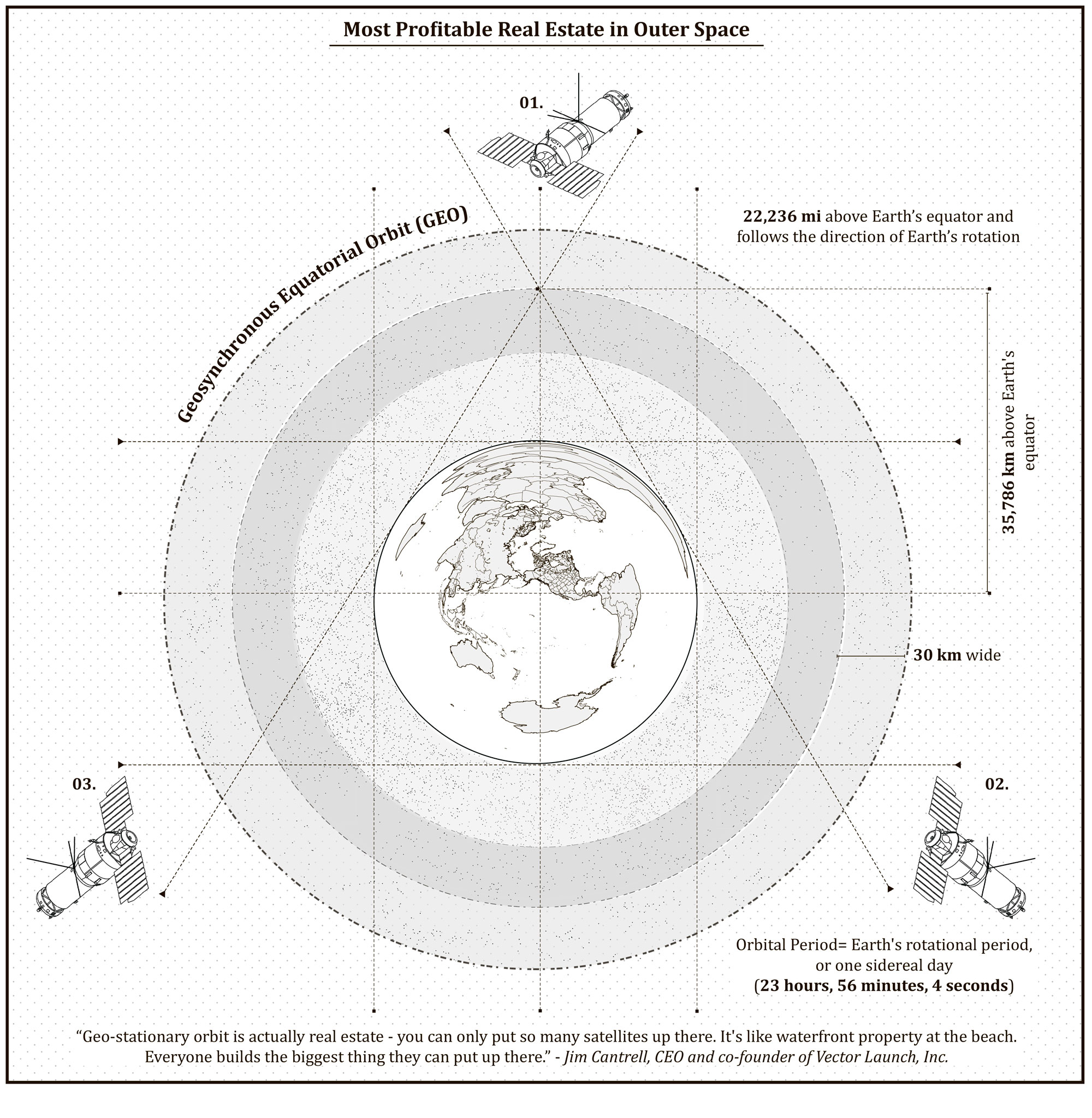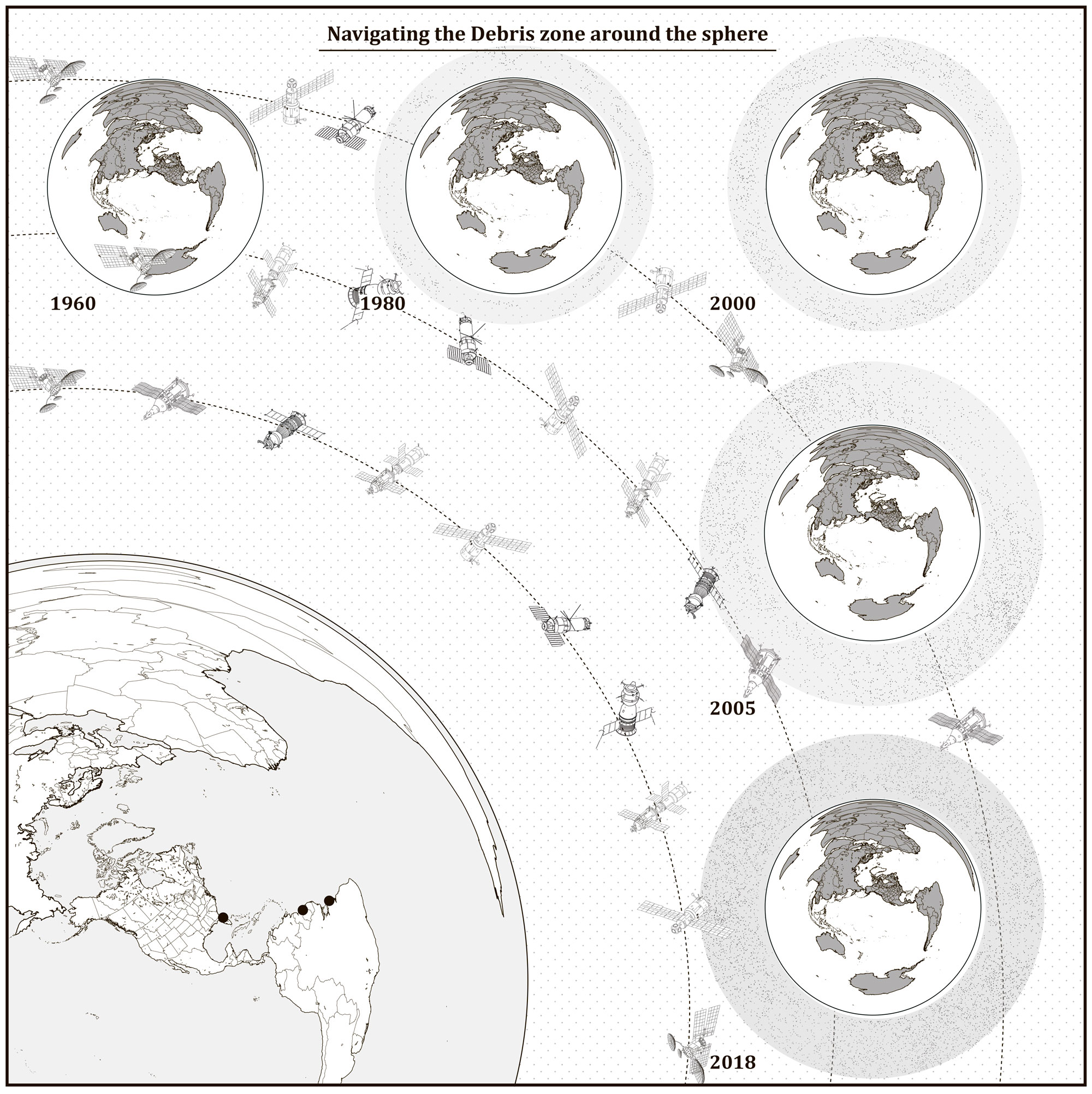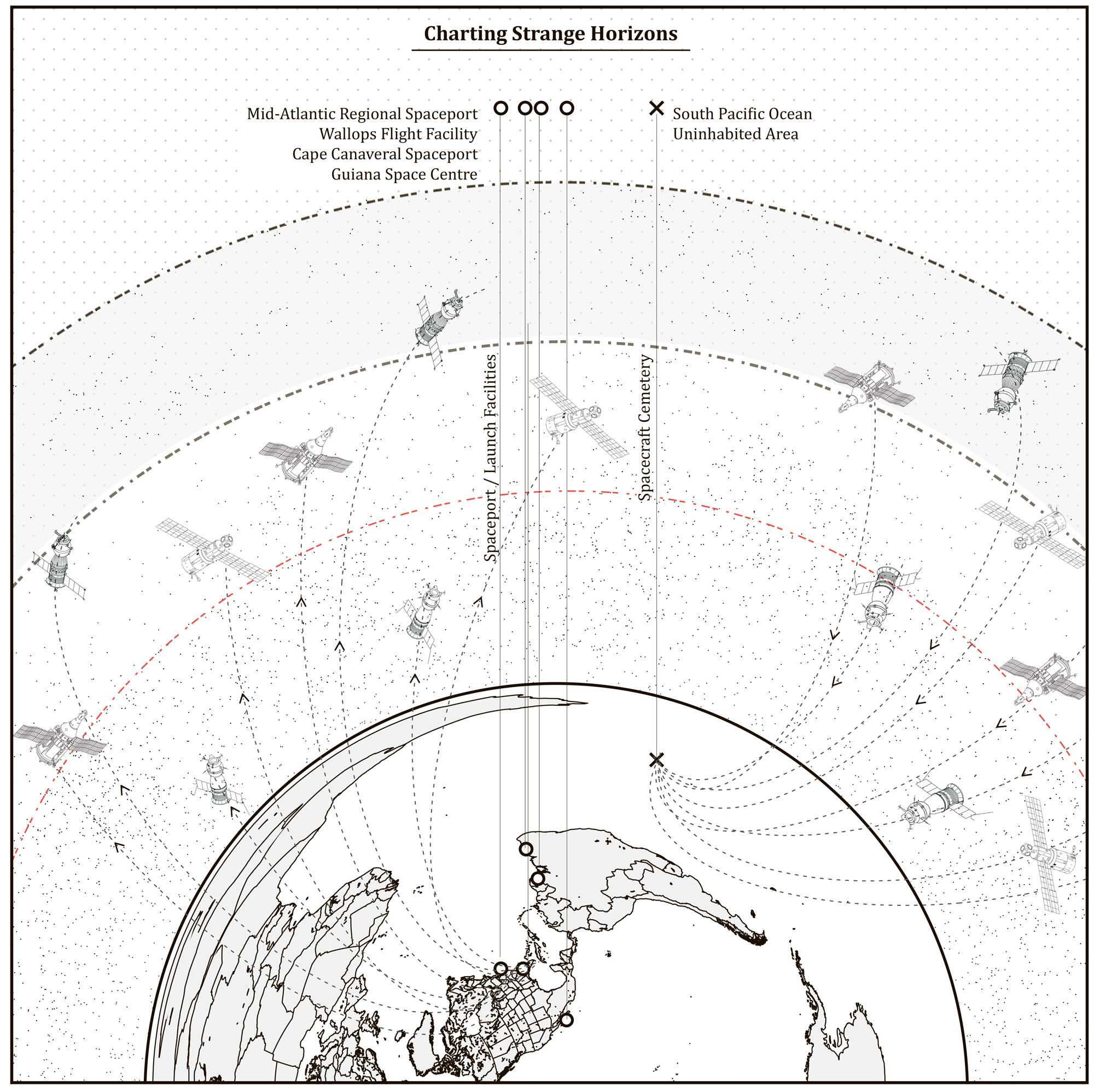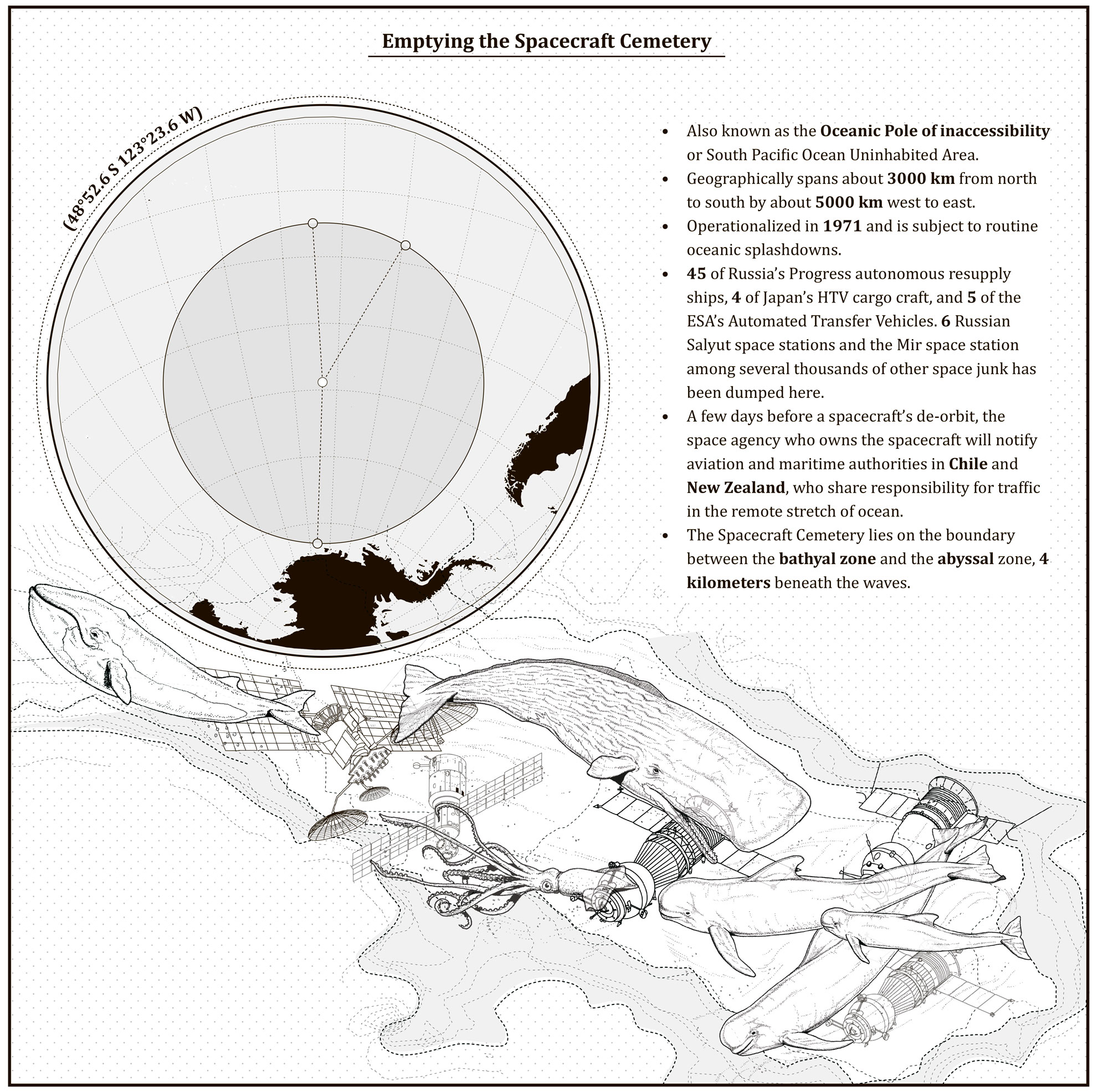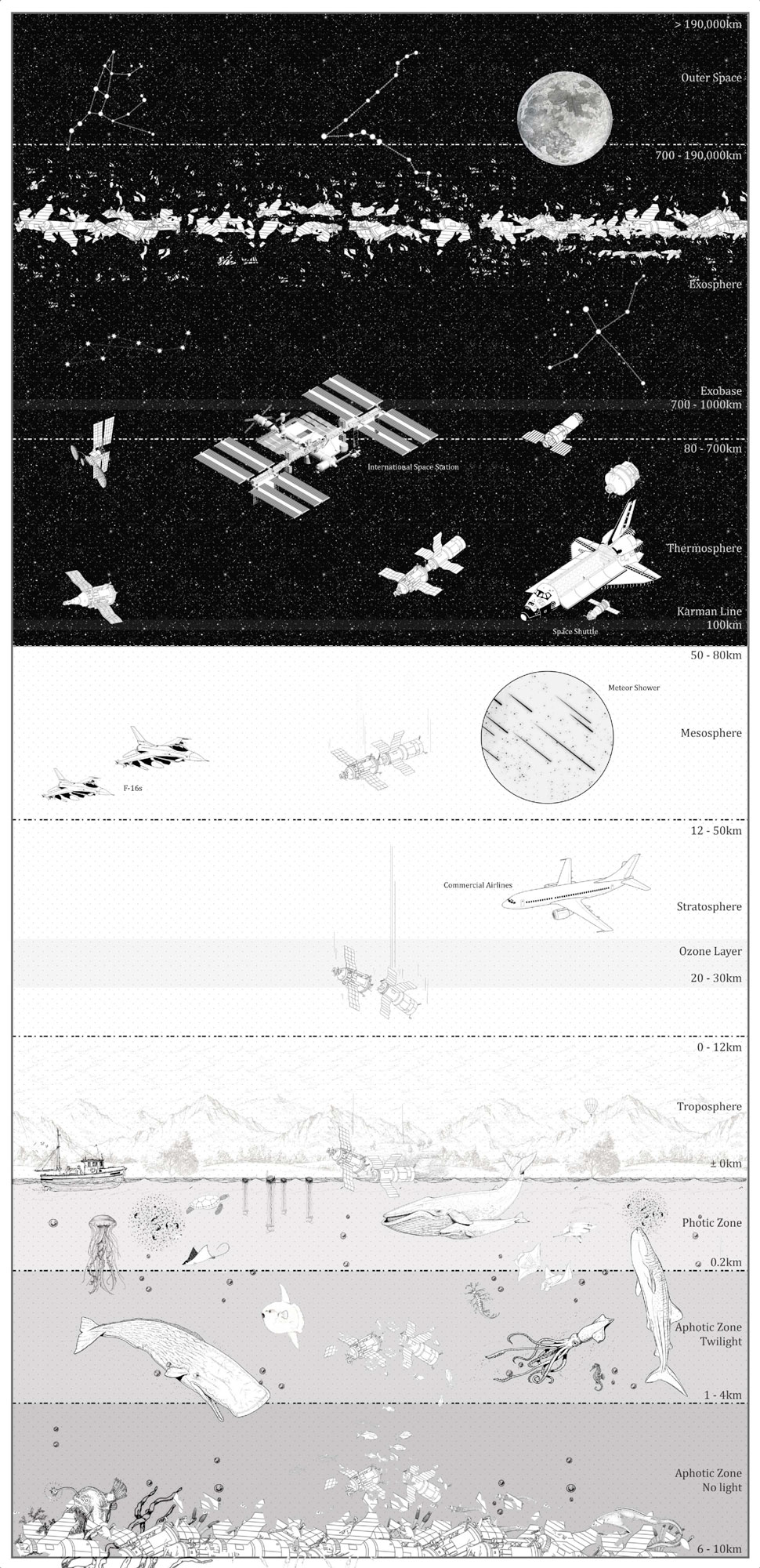Afterlives of Orbital Infrastructures: From the Earth’s High Orbits to its High Seas
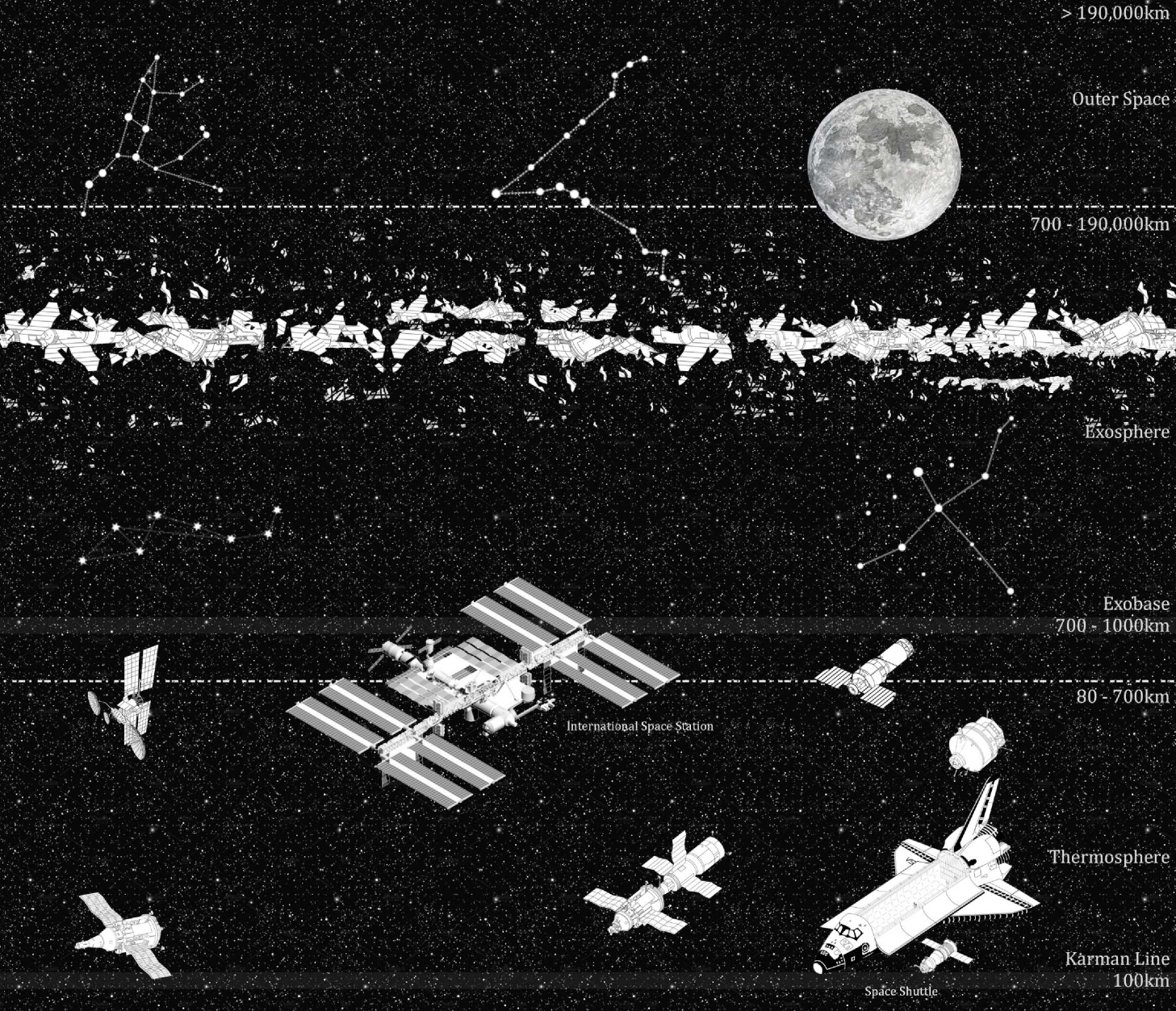
by Rajji Sanjay Desai (MDes ULE ’19)
“We live in an age in which extremely expensive machines are made and installed in orbit without public knowledge, only to be spectacularly blown away and become total losses before our eyes.” ¹
Through this thesis, I propose the concept of “false externalization.” I mobilize this within the context of the ongoing privatization of orbital space in order to characterize the present-day workings of satellite systems. I call this practice “false externalization” because, despite the seeming status of satellites as purely external to the Earth, the forms of techno-waste generated by satellite networks are in fact still subject to a material dialectic between externalization and internalization. Despite their operational lives occurring in a place more or less external to the Earth, these ostensibly externalized toxic wastes are ultimately subject to important processes of (re-)internalization back here on Earth. Significantly, these processes have dire consequences for Earth’s environments—whether built or unbuilt, human or non-human. Moreover, these so-called “externalizations” remain internal to the Earth’s life-supporting and self-sustaining systems—the ramifications of which are profoundly destructive, both socially as well as environmentally.
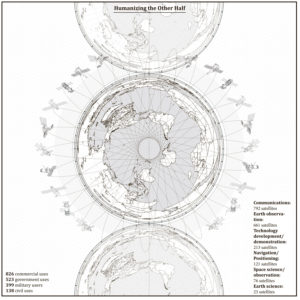
In an attempt to demonstrate the prevalence of this practice in the context of orbital development today, I pursue two lines of inquiry. First, I trace the legal landscape of orbital waste, foregrounding the inextricable link between the spatial politics of orbital waste and the indeterminacies that exist within the legal and legislative frameworks that govern the production of orbital space. Second, I undertake an analysis of the visual and aesthetic regimes that have resulted from these orbital waste processes in order to document how these legal ambiguities permit the materialization of uneven geographies of distribution characterized by widespread environmental and humanitarian injustices.
¹Parks, Lisa: Orbital ruins. In: NECSUS. European Journal of Media Studies, Jg. 2 (2013) Nr. 2, S. 419-429. DOI: https://doi.org/10.5117/NECSUS2013.2.PARK.
